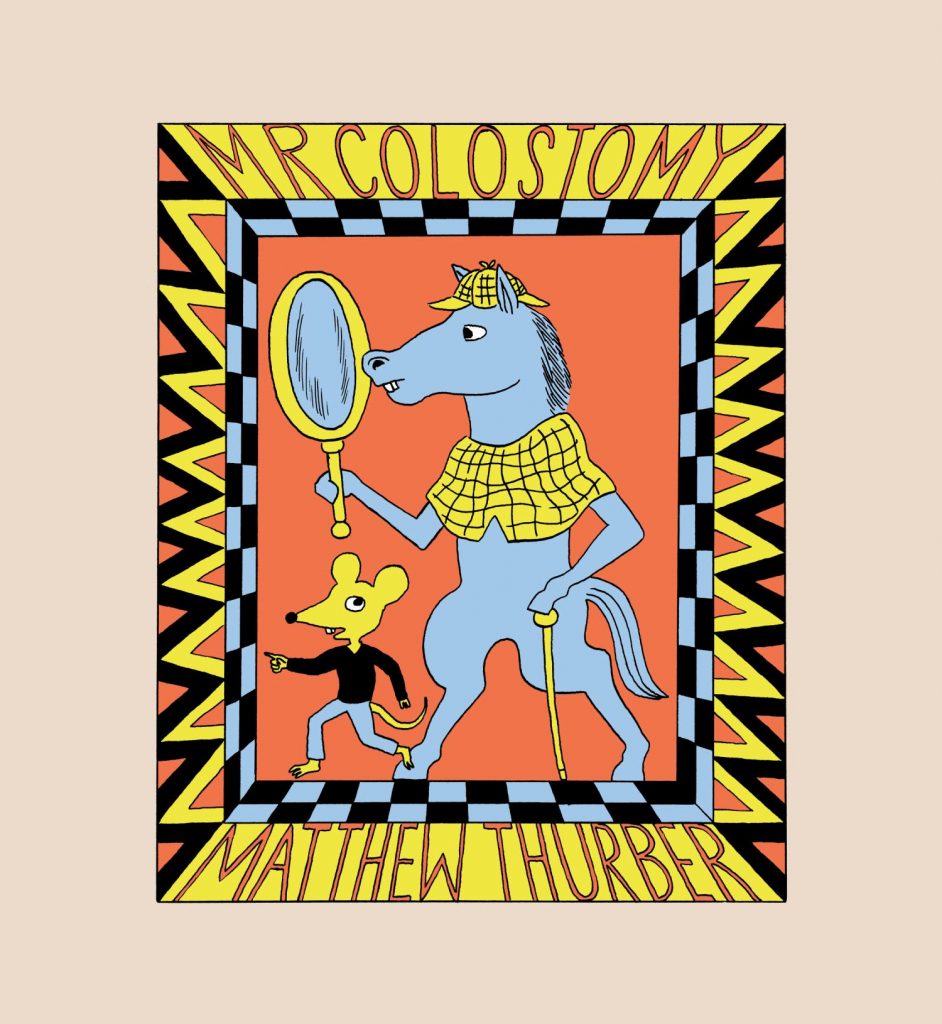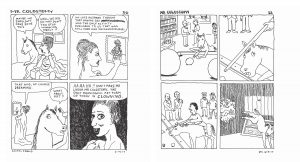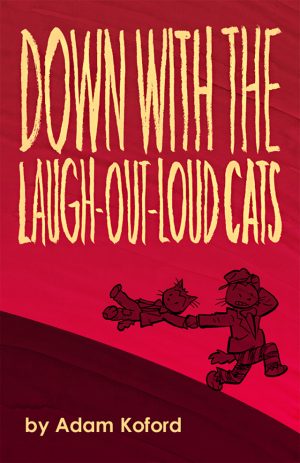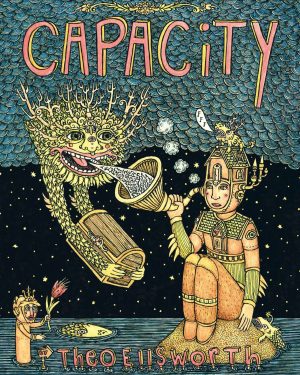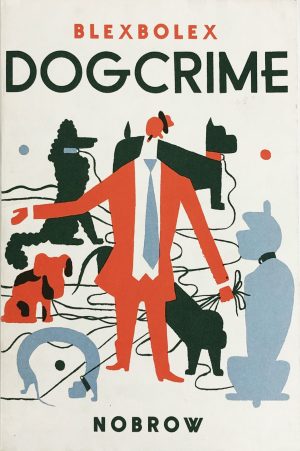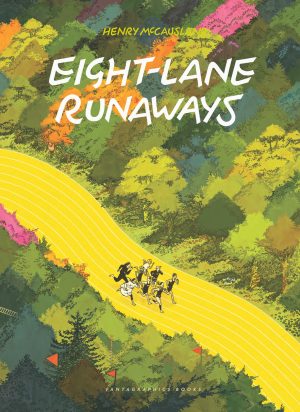Review by Frank Plowright
Matthew Thurber creates his daily Mr Colostomy strip without any forethought or correction, leaving the mistakes and attributing them to the desired or hidden expression of the unconscious. The smell of bullshit might be overwhelming were Thurber not blessed with an innately creative mind constantly asking questions, and a disciplined work ethic delivering a single strip six days a week over a two year period.
The nearest touchstone is the questioning of Bill Griffith’s Zippy the Pinhead who might come up with ideas similar to people having to pay for sleep, and surreal jokes breaking the fourth wall. Thurber’s original idea was to dispense with forethought entirely, but after a couple of months worth of strips he has a viable cast and a number of situations to fall back on. Talking horse Mr Colostomy is an art detective; children with faces painted as if Insane Klown Posse have disappeared, and the mystical qualities of phone books play a part, while commentary on art is frequent.
It all combines for a strangely compulsive tour of Thurber’s increasing inventive imagination. He plays with the form of comics, delves deep into the surreal, and what at first seem just functional drawings take on a compelling quality with thorough immersion. Thurber also twists words for his absurdist hallucinations. However, mention of form shouldn’t give a false impression of Thurber as a precious creator whose appeal can’t extend beyond a dozen chin-strokers. As the sample art shows, he can knock out a straight slapstick gag easily enough, and this selection is never far from a laugh out loud strip. A bonus is his being so inventive with ridiculous names. Mr Colostomy is one the Monty Python guys would have paid for back in the day, and we have Sledgehamster, bar siren Vignetta, and Ersatz Oldman among others.
Mr Colostomy himself wakes from dreams and switches from one location to another, yet is still in theory an investigator, a trade enabling Thurber to introduce his assorted topics. By halfway through he has half a dozen elements that could constitute plots on the go, and either alternates between them or follows one for a few episodes before arbitrarily cutting them off to switch to another. Some themes can be considered recurring, most prominently missing children, whether actual or in the form of sheep, but the primary purpose becomes musings on life and society. These may all be provocative or all be genuine. And then there’ll be a strip about a giant egg appearing in a town overnight.
As with many other large collections of short strips, some patience is advised. Thurber created these four panel wonders over a two year period, and mass consumption dulls the wonder.
